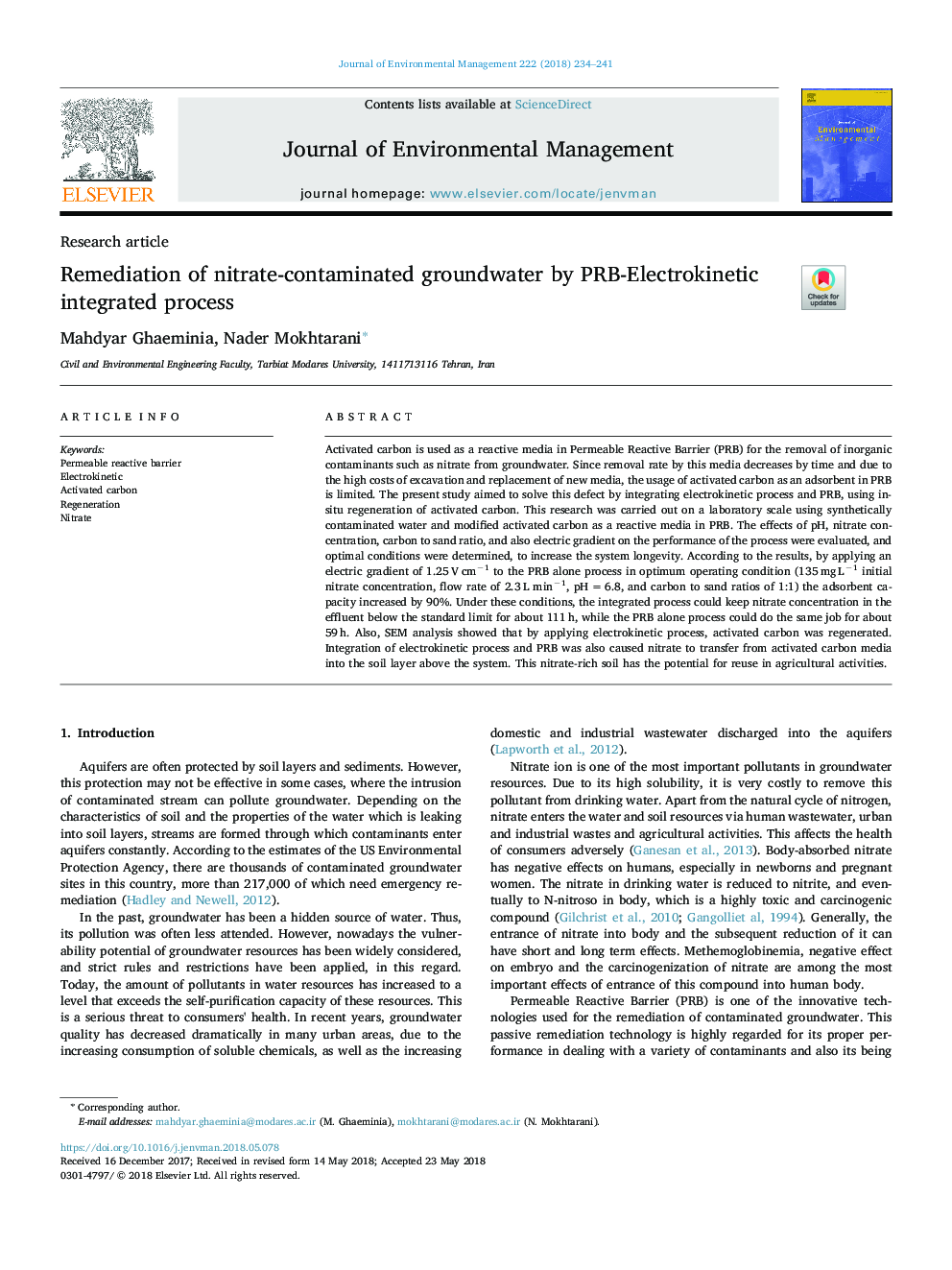| Article ID | Journal | Published Year | Pages | File Type |
|---|---|---|---|---|
| 7476135 | Journal of Environmental Management | 2018 | 8 Pages |
Abstract
Activated carbon is used as a reactive media in Permeable Reactive Barrier (PRB) for the removal of inorganic contaminants such as nitrate from groundwater. Since removal rate by this media decreases by time and due to the high costs of excavation and replacement of new media, the usage of activated carbon as an adsorbent in PRB is limited. The present study aimed to solve this defect by integrating electrokinetic process and PRB, using in-situ regeneration of activated carbon. This research was carried out on a laboratory scale using synthetically contaminated water and modified activated carbon as a reactive media in PRB. The effects of pH, nitrate concentration, carbon to sand ratio, and also electric gradient on the performance of the process were evaluated, and optimal conditions were determined, to increase the system longevity. According to the results, by applying an electric gradient of 1.25â¯Vâ¯cmâ1 to the PRB alone process in optimum operating condition (135â¯mgâ¯Lâ1 initial nitrate concentration, flow rate of 2.3â¯L minâ1, pHâ¯=â¯6.8, and carbon to sand ratios of 1:1) the adsorbent capacity increased by 90%. Under these conditions, the integrated process could keep nitrate concentration in the effluent below the standard limit for about 111â¯h, while the PRB alone process could do the same job for about 59â¯h. Also, SEM analysis showed that by applying electrokinetic process, activated carbon was regenerated. Integration of electrokinetic process and PRB was also caused nitrate to transfer from activated carbon media into the soil layer above the system. This nitrate-rich soil has the potential for reuse in agricultural activities.
Related Topics
Physical Sciences and Engineering
Energy
Renewable Energy, Sustainability and the Environment
Authors
Mahdyar Ghaeminia, Nader Mokhtarani,
